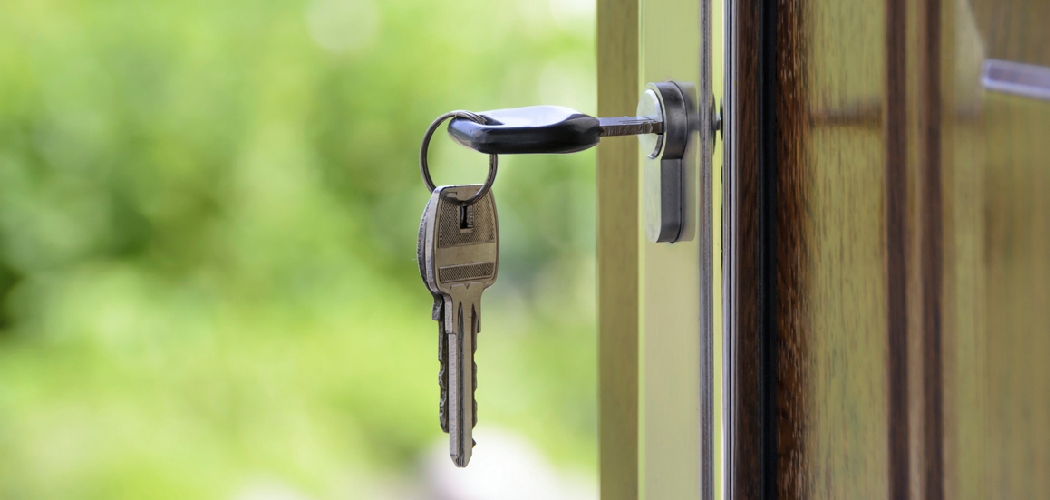When a door refuses to lock properly, it can be more than just an inconvenience—it may also pose a security risk. Several factors could cause this issue, ranging from misaligned hardware to damaged components.
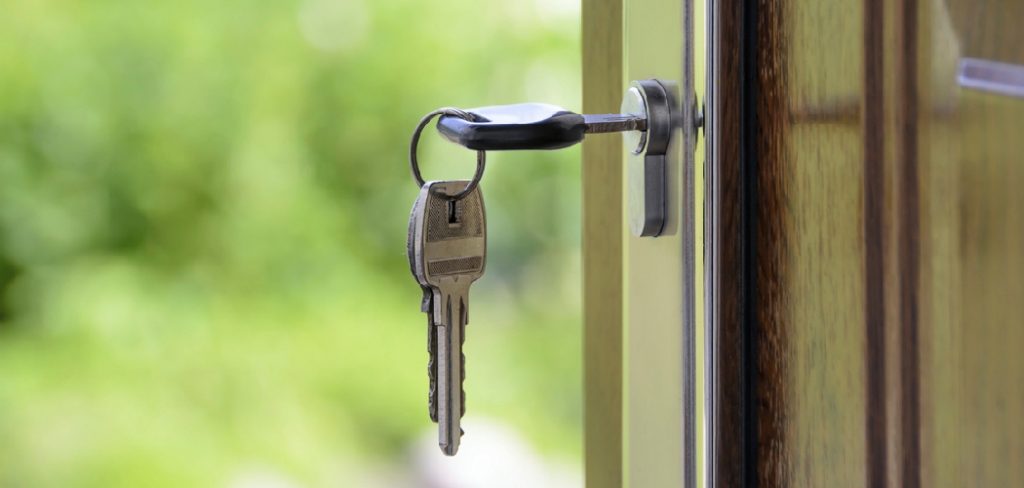
Thankfully, most door lock problems can be resolved with some basic tools and a little know-how. In this guide on how to fix a door that won’t lock, we’ll walk you through the common causes and step-by-step solutions to help you fix a stubborn door lock efficiently.
Why Won’t My Door Lock?
There are several reasons why a door lock might stop functioning properly. One common issue is a misaligned strike plate, which can prevent the latch from securing correctly. Over time, wear and tear can also damage internal lock components, causing them to jam or fail entirely.
Weather changes may result in wood swelling or shrinking, leading to improper door alignment. Additionally, dirt or debris inside the lock mechanism can hinder its operation. Identifying the root cause is the first step to addressing and resolving the problem effectively.
Needed Materials
Screwdriver:
To fix a misaligned strike plate, you will need a screwdriver to remove and adjust the screws holding the strike plate in place. A Phillips-head or flat-head screwdriver may be required depending on the type of screws used.
Lubricant:
In cases where dirt or debris is causing problems with the lock mechanism, a lubricant can help improve its operation. Look for a silicone-based or graphite-based lubricant specifically designed for locks.
Sandpaper:
If weather changes have caused your door to swell or shrink, sandpaper can help smooth out any rough spots or edges that could be preventing proper alignment. Make sure to use fine-grit sandpaper and gently sand down any areas that seem to be sticking or catching.
Replacement Parts:
If the above steps do not fix the issue, it may be necessary to replace certain parts of the lock mechanism. This can include the latch, deadbolt, or even the entire lock itself. If you are unsure of how to make these replacements, it is best to consult a professional locksmith for assistance.
Remember to always take caution when attempting any DIY fixes on your door locks. If you feel uncomfortable or unsure at any point during the process, it is best to seek help from a professional rather than risk causing further damage.
6 Steps on How to Fix a Door That Won’t Lock
Step 1: Inspect the Door and Strike Plate
Start by closely examining the door and the strike plate to identify any visible issues. Check if the door is properly aligned with the frame and whether the strike plate is positioned correctly. Look for signs of wear, damage, or misalignment on the strike plate and the latch.
Also, ensure there is no debris or dirt obstructing the mechanism. This initial inspection will help determine if the issue requires adjustment, cleaning, or replacement of parts.
Step 2: Adjust the Strike Plate
If the strike plate appears to be misaligned, you may need to adjust its position. Start by loosening the screws holding the strike plate in place, but do not remove them completely. Gently shift the plate up, down, or sideways to better align it with the latch.
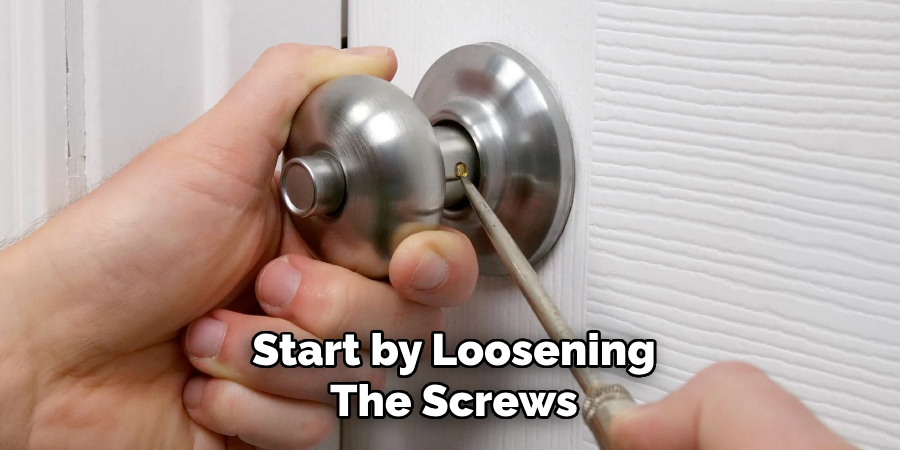
Once aligned, tighten the screws securely, making sure the plate stays in the correct position. If necessary, use a pencil to mark the new position before making the adjustment. Test the door to ensure it latches properly. If the issue persists, you may need to enlarge the opening in the strike plate using a metal file or consider replacing the plate entirely.
Step 3: Clean and Lubricate
Over time, dirt and debris can accumulate in the latch mechanism and prevent smooth operation. Start by cleaning the latch, strike plate, and surrounding areas with a damp cloth to remove any buildup. Use a can of compressed air or a small brush to clear out dust from hard-to-reach areas inside the locking mechanism.
Once cleaned, apply a lubricant, such as a silicone-based spray or graphite powder, to the latch and other moving components. Avoid using oil-based lubricants as they can attract more dirt over time. Test the door after cleaning and lubricating to ensure it operates smoothly.
Step 4: Replace Worn Components
If, after inspection, you notice that certain components such as the hinges or latches, are visibly worn or damaged, it may be necessary to replace them. Most hardware stores carry replacement parts for common types of doors and hardware. Just be sure to bring the old part with you so that you can find an exact match.
Step 5: Tighten Loose Screws or Bolts
Over time, screws and bolts on your door and its hardware can loosen due to regular use. To address this, check all screws and bolts on the hinges, handles, and other components of the door.
Use a screwdriver or wrench to tighten them securely, but be careful not to over-tighten, as this could strip the threads or damage the hardware. Ensuring that all screws and bolts are properly tightened will improve the stability and operation of the door.
Step 6: Consider Professional Help
If you have tried all these steps and are still having trouble with your sticky door, it may be time to seek professional help. A handyman or locksmith can assess the situation and make necessary adjustments or repairs that may require special tools.
Following these steps on how to fix a door that won’t lock or close properly, you can save yourself time and money by avoiding costly repairs or replacements in the future. Remember to regularly maintain your doors and address any minor issues before they become major problems.
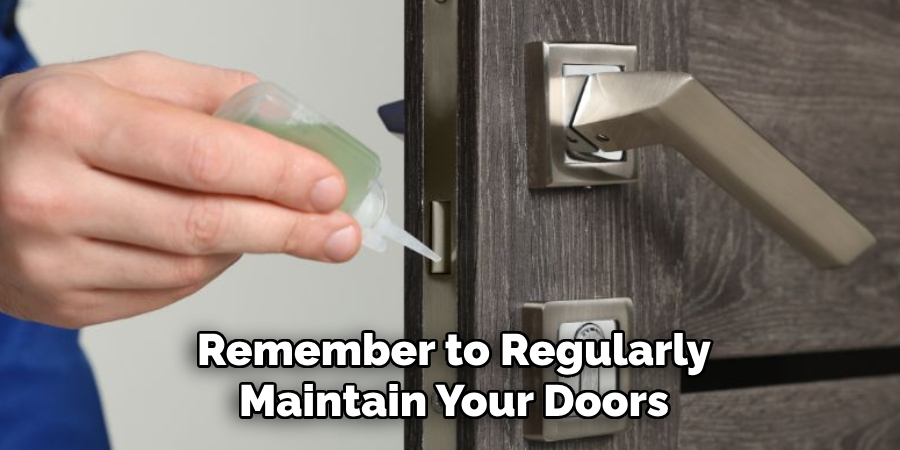
With these simple steps, you’ll have a smooth-operating door in no time! Keep your home secure and functional with proper door maintenance. Additionally, don’t forget to check the hinges on your door periodically to ensure they are well lubricated and functioning properly.
Additional Tips for Maintaining Doors
Regular maintenance is key to keeping your doors functioning properly for years to come. Here are a few additional tips to help prolong the life of your doors:
- Clean and lubricate hinges and latches regularly to prevent rust and corrosion.
- Avoid slamming or forcing the door shut, as this can cause damage to the frame and hardware.
- If you notice any squeaking or sticking when opening or closing the door, use a silicone-based lubricant to help ease movement.
- Check weather stripping around exterior doors and replace if necessary to prevent drafts and energy loss.
- Add a coat of paint or sealant every few years to protect wooden doors from weathering and rot.
By following these simple maintenance tips, you can ensure that your doors remain in good condition and continue to function properly for many years.
Frequently Asked Questions
Q: How Often Should I Clean My Doors?
A: It is recommended to clean your doors at least once a month or whenever they appear dirty. This will help prevent buildup of dirt and grime, which can cause damage over time.
Q: Can I Use Any Type of Cleaner on My Doors?
A: It is best to use a mild, non-abrasive cleaner specifically designed for the material of your door. Avoid using harsh chemicals or abrasive cleaners, as they can strip the finish or damage the surface.
Q: How Can I Prevent Squeaks and Sticking in My Doors?
A: Regularly lubricating hinges and hardware with a silicone-based lubricant can help prevent squeaking and sticking. Additionally, checking and adjusting the alignment of your doors can also help prevent these issues.
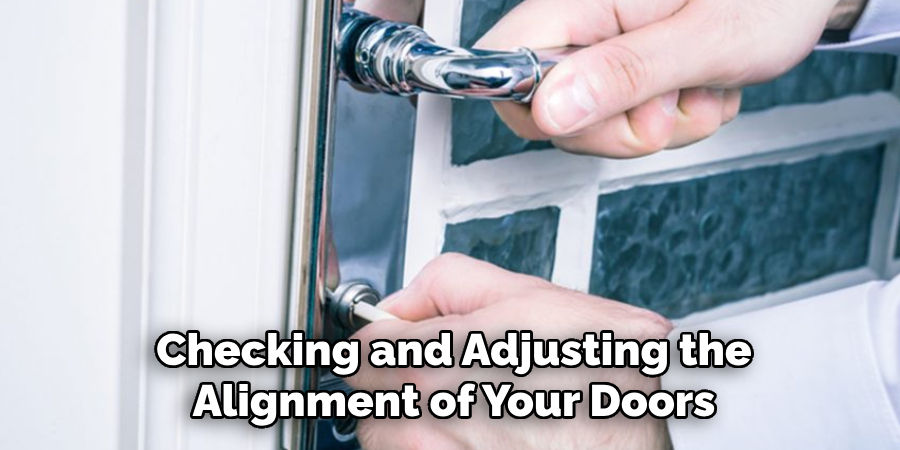
Q: How Often Should I Paint or Stain My Doors?
A: The frequency at which you need to paint or stain your doors depends on various factors such as the material, location, and exposure to elements. Generally, it is recommended to repaint or restain every 3-5 years for exterior doors and every 5-7 years for interior doors. However, this may vary and it is best to consult with a professional for specific recommendations based on your door’s condition.
Q: How Can I Maintain My Doors?
A: To ensure that your doors remain in good condition, it is important to perform regular maintenance. This includes cleaning them regularly with a mild soap and water solution, checking for any cracks or damage, and repairing or replacing any weather stripping if necessary. It is also recommended to check and adjust the hinges, latches, and locks periodically to ensure they are functioning properly.
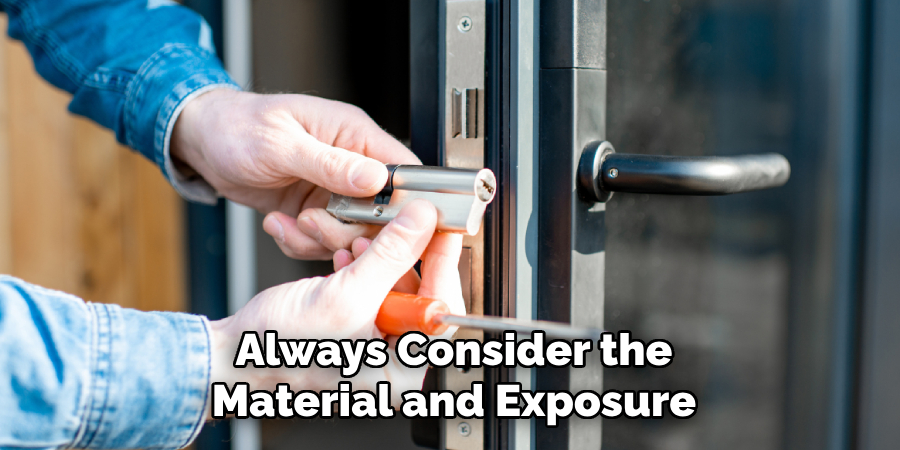
Conclusion
Proper maintenance and care of your doors can significantly enhance their lifespan and functionality while keeping them aesthetically pleasing. Whether it’s regular cleaning, repainting, or addressing hardware issues, taking the time to care for your doors can prevent costly repairs and ensure they remain a beautiful and reliable part of your home.
Always consider the material and exposure conditions of your doors and consult with a professional when in doubt to ensure the best results. Thanks for reading this article on how to fix a door that won’t lock.

